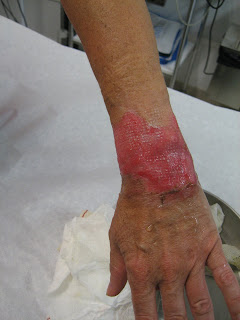Surely it's a question of degree, if not semantics. Room for design improvement, anyway - hence the 2001 head re-design for other applications of this Ford engine?Northern Bongolow wrote:well done steve




for all your hard work.i must just say,that in my humble opinion,i hasnt really pointed to a head design fault. or has it.
to me it just points to looking after your cooling system properly.i know you cannot help what you inherit.maybe bongo's that come up for sale should come with a certified cooling system,with x rays to prove.
I think the whole thread does still point up the benefits of using the full Mazda-specified air bleed procedure for re-filling after any drain down which introduces air into the upper levels of the system - even though, with luck, a following wind, a good fast reacting coolant temperature monitor, and very careful attention, the engine idling/self-bleeding/automatic de-gassing method can also be made to work. Whether every time is another matter, and I reckon the jury's out, unless a lot more peeps are persuaded to try it first - I wouldn't, particularly not in my V6 (see below).
The coolant flows highlighted here http://www.igmaynard.co.uk/bongo/forum/ ... 02#p457197 confirm, once again, that the front heater is particularly tricky to bleed. Routing of coolant from there, through a switchback of plumbing before it eventually gets round to the expansion/de-gassing tank (as it really is) means that trapped air in the heater will be particularly slow to fully shift by transfer to the ex tank for eventual venting by topping up there - unless the high revving Mazda method is used.
These observations are based on recent direct experience, as well as a number of PM exchanges with two other peeps with related experience, careful reading of this brilliant topic, and independent reading. Other points which have emerged, with reference to the V6 J5 petrol engine, are:
1.) The Mazda-recommended (instructed!) bleed method for the J5 engine takes longer than that for the WL-T diesel - perhaps unsurprisingly, given the two banked cylnder heads of the V6 (although we presumably don't know if there are air trapping areas at the top of them as in the WL-T's single head).
2.) When self-bled, the V6 seems* to take a lot longer to circulate entrapped air for eventual venting by topping up coolant at the ex tank - again perhaps not altogether surprisingly. I would therefore definitely not recommend it on a V6, at least not before there have perhaps been more guinea pigs.
*(Although my LPG conversion could possibly also be relevant here - coolant flows through parts of it. Anyway, be assured that I haven't deliberately self-bled my V6! It has been done by default, after a "Bongo-friendly" garage did not use the bleed (vent) hose method after a coolant change, and left me unwittingly completing a self-bleed process. I've been able to compare results/timing with another peep whose WL-T engine was given the same treatment at the same place.)









